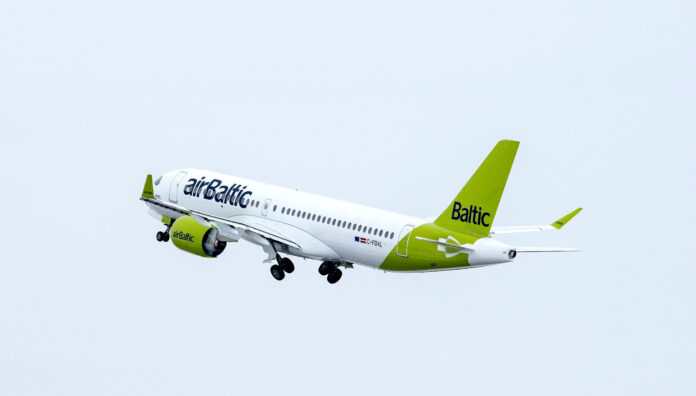Talking at Routes Reconnected today, airBaltic’s CEO said the carrier is looking more than ever at longer routes using its A220s, perhaps even from an airport with one of its 22 codeshare partners.
Martin Gauss, airBaltic’s CEO, exudes positivity: “We’re going through this crisis – it’s a crisis and all have an end.”
He is very much looking forward. “I can now see the end of this crisis.”
While related to confidence-boosting vaccinations, this is strongly influenced by the changes airBaltic made during coronavirus.
“If you fully focus on staying [financially] and you revise the product, you can grow out of the crisis. You can grow successfully very fast.”
Much may change network-wise, Gauss said, focused on the F word: flexibility.
“In Europe, we have so many ideas where we’d like to fly. We are now looking at many different places we didn’t look at in the past.” This is especially in terms of thinner routes, he said.
And airBaltic is now looking more than ever at medium- and long-haul. “We are asking whether it makes sense to fly a route that is significantly longer but because of demand or maybe a widebody that nobody could deploy, maybe airBaltic could do that.”
Crucially, Gauss said this could be done from the Baltics – or from an airport with one of its 22 codeshare partners.
“We are flexible on this – and you have to be flexible now.”
airBaltic changed its product to grow
airBaltic’s fleet was grounded for 62 days, minus a bit of flying for the government.
“These 62 days helped us,” Gauss said. “We used this time to change our product, with the key change being a single fleet.” This was really an acceleration of a decision it had made earlier.
In June 2020, airBaltic removed its B737 classics and its Dash-8-400s to focus on only one type: the Airbus A220-300.
The reason is both simple and simplicity. Fleet right-sizing, modernising, and simplicity are perhaps more important now than ever.
“We now have nothing from the past. We do not have old aircraft types. We have the right staff size, we have the right cost size.”
It’s no wonder Gauss stated that he doesn’t see the crisis as a negative development, although this is clearly influenced by its cash injections, “which put us in a very strong position.”
“We’re ready to go. The start is coming – probably in spring. After the crisis, the A220s will perfect for us to do what we want to do.”
























